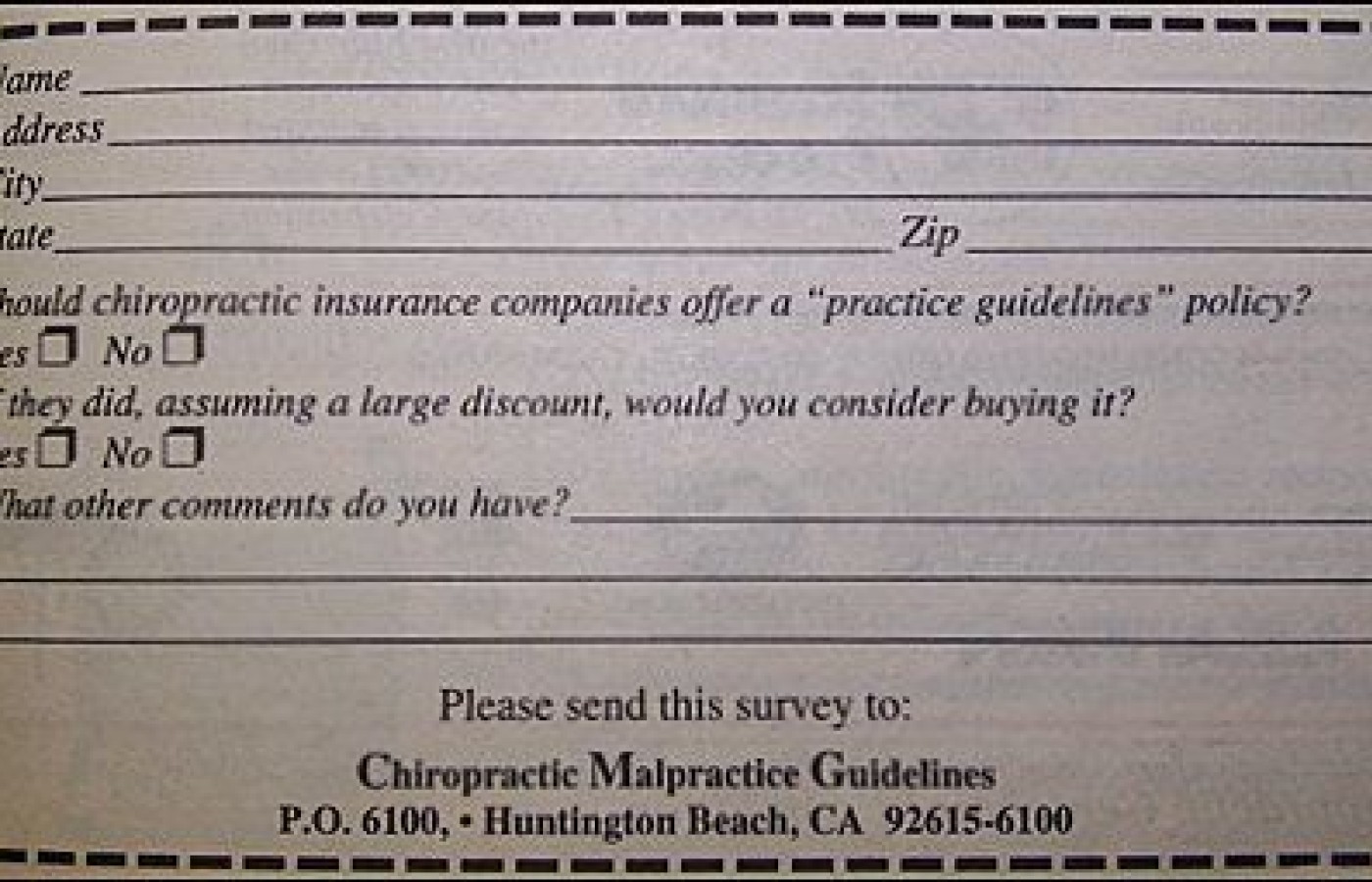Some doctors thrive in a personality-based clinic and have a loyal following no matter what services or equipment they offer, but for most chiropractic offices who are trying to grow and expand, new equipment purchases help us stay relevant and continue to service our client base in the best, most up-to-date manner possible. So, regarding equipment purchasing: should you lease, get a bank loan, or pay cash?
Would You Do It?
You know the scenario: Something unexpected happens with a patient. Maybe it happened in your office, maybe in the patient's home, or maybe after being referred to an orthopedist.
Eventually a lawsuit ensues. Your insurance carrier hires an attorney who asks for all your records. Finally, your "expert" goes head to head with their "expert." Who will win? Usually the one who hired the best "expert."
How does a DC know what will happen when the court looks at their actions? Will a jury consider your actions appropriate? How can this patient be suing you when you didn't do anything wrong?
Chiropractors, malpractice insurance carriers and legislators are looking at such scenarios and asking the question: "Is there a better way?" Newly passed legislation in Kentucky states:
"Any health care provider who has followed the practice guidelines approved by the board in the treatment of a patient shall be presumed to have met the appropriate legal standard of care in medical malpractice cases regardless of any unanticipated complication that may thereafter develop or be discovered."Several new developments in medical malpractice may be pointing to a new trend in malpractice coverage. MDs have been reeling under the weight of extreme malpractice premiums for years, so much so that carriers have sought ways to reduce risk and ultimately reduce costs.
One concept that has taken hold with approximately a dozen medical malpractice insurers is the idea of distributing practice guidelines to doctors. Within the chiropractic profession, both National Chiropractic Mutual Insurance Company (NCMIC) and OUM and Associates mailed the chiropractic practice guidelines to all of their policy holders. According to an article in the September 5, 1994 issue of the American Medical News: "Many (malpractice carriers) offer premium discounts to those who voluntarily agree to follow the protocols."
The article goes on to describe a malpractice insurance company called COPIC "which requires compliance (with practice guidelines) as a condition of insurance." While this may seem extreme, but other insurance companies are considering a similar requirement, according to the article.
While some doctors aren't interested, others suggest that most of the guidelines cover what many doctors are already doing in their offices. This may seem like an intrusion into the rights of a doctor to make treatment choices, but there are some serious benefits: The AMA News reports that "premiums in obstetrics and anesthesia are dropping. In fact, they've been almost halved since 1988."
So there it is; practice guidelines may ultimately be a means of reducing malpractice exposure and subsequently lower malpractice insurance premiums.
Would compliance with chiropractic practice guidelines reduce malpractice risks substantially? And if they did, and the carriers offered a policy at a sizable discount, would you buy it? Would you be willing to agree to comply with chiropractic practice guidelines in order to receive a large discount on your malpractice insurance?
While readership surveys should never be considered scientific, it would be interesting to hear your thoughts on this issue. Please fill out the survey below, include any comments you may have, and send it in. We will publish the results in an upcoming issue.

Chiropractic Malpractice Guidelines
P.O. Box 6100
Huntington Breach, CA 92615



